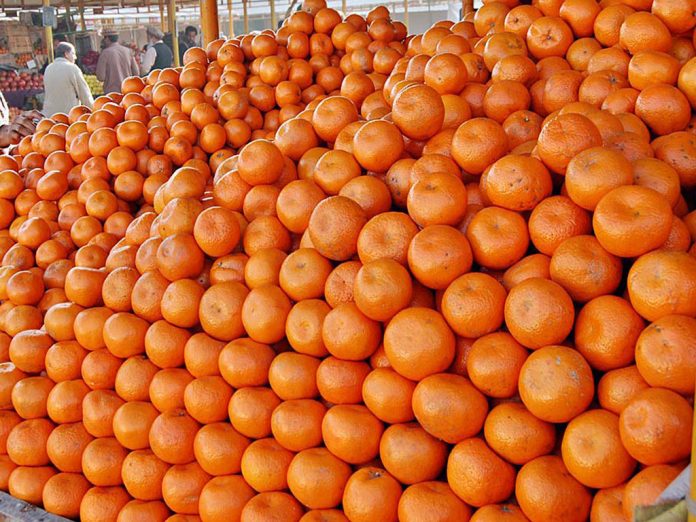Former Chairman of Federation of Pakistan Chambers of Commerce and Industry (FPCCI) on Horticulture Exports, Ahmad Jawad said that the Kinnow season saw a drop in exports by over 40 per cent as less than 200,000 tons of the fruit could be shipped abroad against 460,000 tons last year.
“A steep increase in freight charges, unavailability of containers, lack of banking channels in some destination countries, export bottlenecks and a reduction in the yield because of climatic changes are stated to be the main culprits behind the downfall”.
Talking to media persons in Lahore on Monday, Ahmed Jawad said Pakistan exports kinnow to 40 countries with the Middle East, Indonesia, Malaysia, Russia, Afghanistan and the Philippines as its major markets. Iran and China were to open as new markets. But, due to a lack of formal banking channels and export form issues, the exporters could not exploit the Iranian market, whereas not a single container could be shipped to China mainly because of the unavailability of containers and higher freight charges.
The former FPCCI chairman lamented that the State Bank of Pakistan (SBP) could not open formal banking channels both for Iranian and Russian markets due to which their potential could not be tapped. He says that the Iranian market can absorb between 60,000 to 80,000 tons of kinnow, while the size of the Russian-Ukrainian-Belarus market (the largest citrus importer in the world) for Pakistani citrus fruit may be doubled from the present around 50,000 tons within no time provided the government establishes proper banking links with the two markets.
He urges SBP authorities to resolve the issue at the earliest so that the potential of the market may be fully exploited. He says that overall kinnow exports may be increased to $1 billion within a few years provided the government facilitates the exporters.
Similarly Pakistan had exported just 80 tons of kinnow to China through sea routes, while exporters were eyeing quadrupling the volume this season via land transportation. A larger fruit size, compared with that of Turk and Moroccan produce, and the exotic taste of particularly Sargodha varieties are major attractions of Pakistani kinnow for Chinese consumers. Also, Pakistan’s December-April export window complements that of China’s September-January season.
He believes that promotional activities in Chinese supermarkets may help win more consumers for Pakistani produce which is an economical alternative to the citrus imports there from other countries. He said that Pakistan has already developed food safety and food quality protocols – from orchard management to harvesting and processing (that includes grading, washing, fungicide, drying, packaging) – to meet Chinese standards since the signing of an agreement by Islamabad and Beijing back in 2005.
He said that refrigerated containers are used to maintain the freshness of the fruit during the transportation period that lasts for about 20-30 days by sea and may be reduced to just three or four days through land route.
Because of Covid-19 related restrictions and lockdowns, shipping companies cut their vessel operations as a cost-cutting measure and drastically increased freight charges causing an extra burden on the exporters. This proved to be a major hurdle in shipments to China.
He claimed that against the export of 14,500 containers last season only 7,000 could be shipped this year. Out of them, around 700 containers are still entangled on the way to the Russian market because of the eruption of war there. At least 1,000 more containers could have been sent to Russia had there been no war, he adds.
On the other hand Citrus production has been marred by climate changes this year. Other than naturally less production every alternate year, the citrus yield has been hit by strong hailstorms and heavy rains during the season, whereas unusually long fog spells also marred the fruit from taking its (orange) color. Total crop loss is estimated to be around 30pc, he adds.
He further said that there were also unusual fog spells, even in March when the temperature had gone up. The factor delayed the process of the fruit acquiring its color.
Including extraordinarily long dry spell between August and November last year and then heavy rains in mid-January, caused stagnation of water and damaged kinnow trees.

























informative article with good information